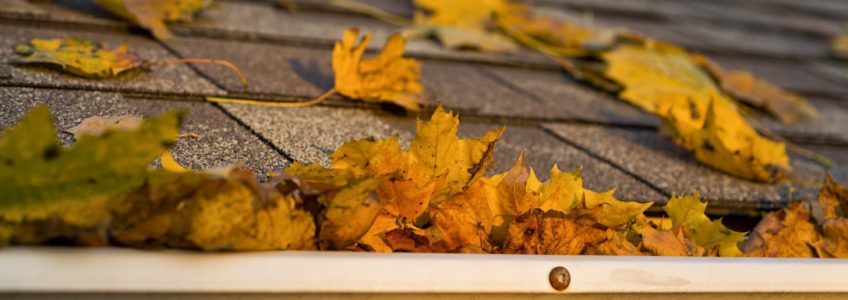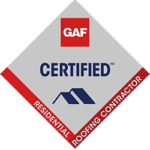
Is It Safe to Roof in Colder Temperatures?
If you are scheduled for a roof replacement in the fall, you might be wondering whether or not the work will be safe to do in cold temperatures. While the basic answer is yes, we’ve put together an explainer that might help illuminate some of the most prevalent issues when roofing in the cold.
There is no industry guideline for what temperature it should be during installation; however, warmer weather is preferred. This is because asphalt shingles require heat to settle and lay flat. They are more flexible in warm weather, and the sealant we use is activated by heat.
However, there are many other factors to consider that will dictate the efficiency of the roofing process.
Different Types of Heat Transfer
We often use the temperature of the air as the gauge of whether it’s warm enough to put on a new roof, but this type of heat is not always the biggest mitigating factor. In reality, the temperature of the roof itself can be much higher than the ambient temperature.
Most roofers will agree, waiting for the weather to cool slightly makes the work much more pleasant. No matter what the air temperature is, it’s guaranteed to be a lot hotter up on the roof. As a result, while putting a new roof on in the dead of Minnesota is definitely not recommended, it’s safe to say that roofing in the fall is a good and safe bet.
For example, the air might be nice and cool, but if the sun is shining and we’re up on the roof working, the temperatures up there can be significantly higher. To give you a general idea of the difference, in 30-degree weather, the temperature on the roof might rise to 100˚.
Radiant heat—as opposed to the ambient temperature—is far more critical to the process. Radiant heat is what will activate the seal strip on the shingles themselves. Your roof will seal nicely, even though it’s chilly outside.
Today’s Sealants are Much More Efficient
Manufacturers are always looking for ways to delight their customers, but reducing warranty claims is a primary concern. If there are too many claims, the business will not be cost-effective.
Historically, most sealant claims have stemmed from cold-weather applications. To reduce the risk, new formulas have been created to support more efficient sealer activation, even in colder temperatures.
What this means for you is that you have more flexibility, not only in terms of when you can have your roofing work done, but also on how long it’s going to last. After all, a new roof is a significant investment. You won’t want to revisit the situation anytime soon.
When It’s Better to Wait For Warmer Weather
Typically, if your shingles don’t seal immediately, they will do so fairly quickly as the sun heats them up in the days to follow.
However, if your house or building is in an unprotected open area, if your roof is shaded, or if you typically experience high winds or a lot of blowing dust, the adhesive might not set efficiently. In this case, we usually advise waiting until the warmer weather returns.
Questions to Ask Your Roofer about Roofing in the Cold
If your roofing job can’t wait or if you have any concerns at all, we encourage you to speak to us directly and ask as many questions as you like. We want the job to go well, just as much as you do, and we’ll always give you the straight goods.
Here are some questions you might want to ask:
- What kind of warranty do you offer?
- Be sure your roofer provides you with a written warranty in order to protect yourself from unanticipated costs.
- What is your relationship with the manufacturer?
- Your contractor’s relationship with the manufacturer is pivotal, as it ensures there is recourse in case of defective materials.
- Is it better to wait until spring to replace my roof?
- The answer to this question should always be yes. If they press you to commit to a cold-weather installation, they might be putting their own interests over yours. If your contractor has cash-flow issues before you even start, it’s never going to get better.
In conclusion, if your roof needs replacing immediately, don’t delay. A faulty roof can put more than just your finances in peril – it can seriously impact your family’s comfort and safety, and it can also put your belongings at risk.
Be sure to choose your contractor wisely, especially when roofing in the cold. A to Z Construction repairs, replaces, and installs residential and commercial roofs throughout the Twin Cities area during the spring, summer and fall, and you can always count on us to deliver. Reach out today to request a quote.









